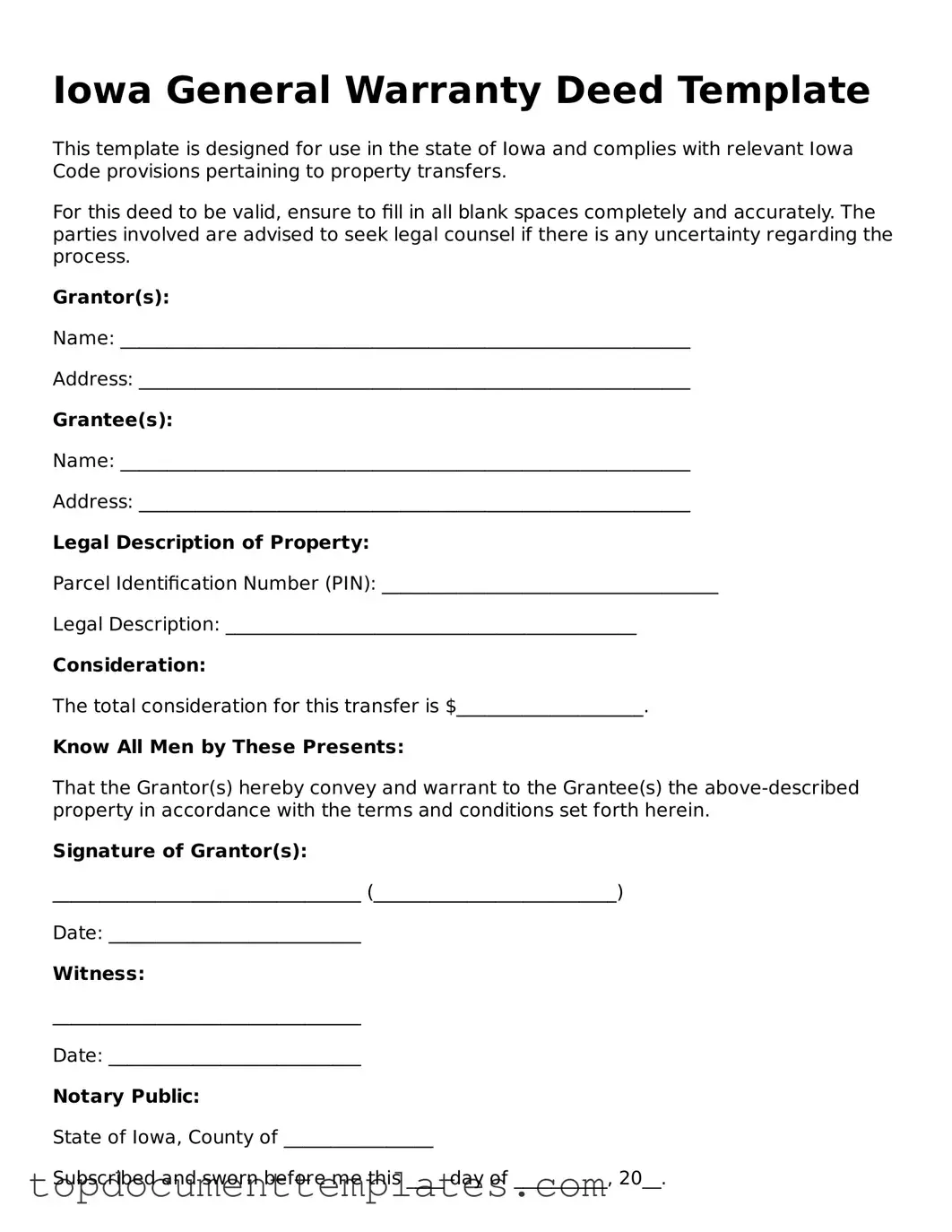The Iowa Deed form serves as a crucial document in real estate transactions, facilitating the transfer of property ownership from one party to another. This form encompasses several key components, including the names and addresses of both the grantor (the seller) and the grantee (the buyer), a detailed description of the property being transferred, and the consideration, or payment, involved in the transaction. Additionally, it often includes information about any existing encumbrances, such as liens or mortgages, that may affect the property. The form must be signed by the grantor, and in some cases, it may also require notarization to ensure its validity. Once completed, the deed is typically filed with the county recorder's office, thereby making the transfer of ownership a matter of public record. Understanding these elements is essential for anyone involved in buying or selling property in Iowa, as they help to protect the rights of both parties and ensure a smooth transaction process.
